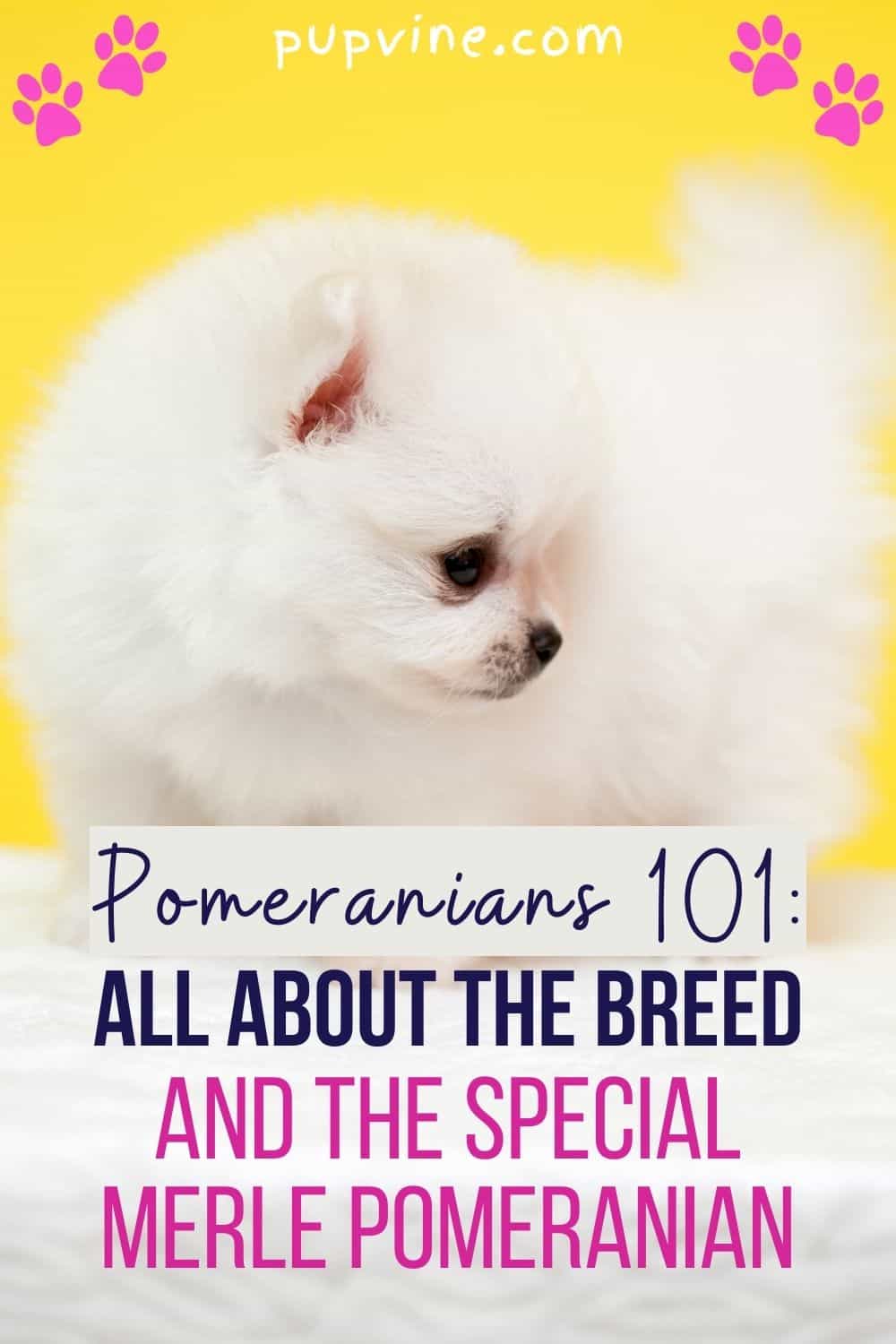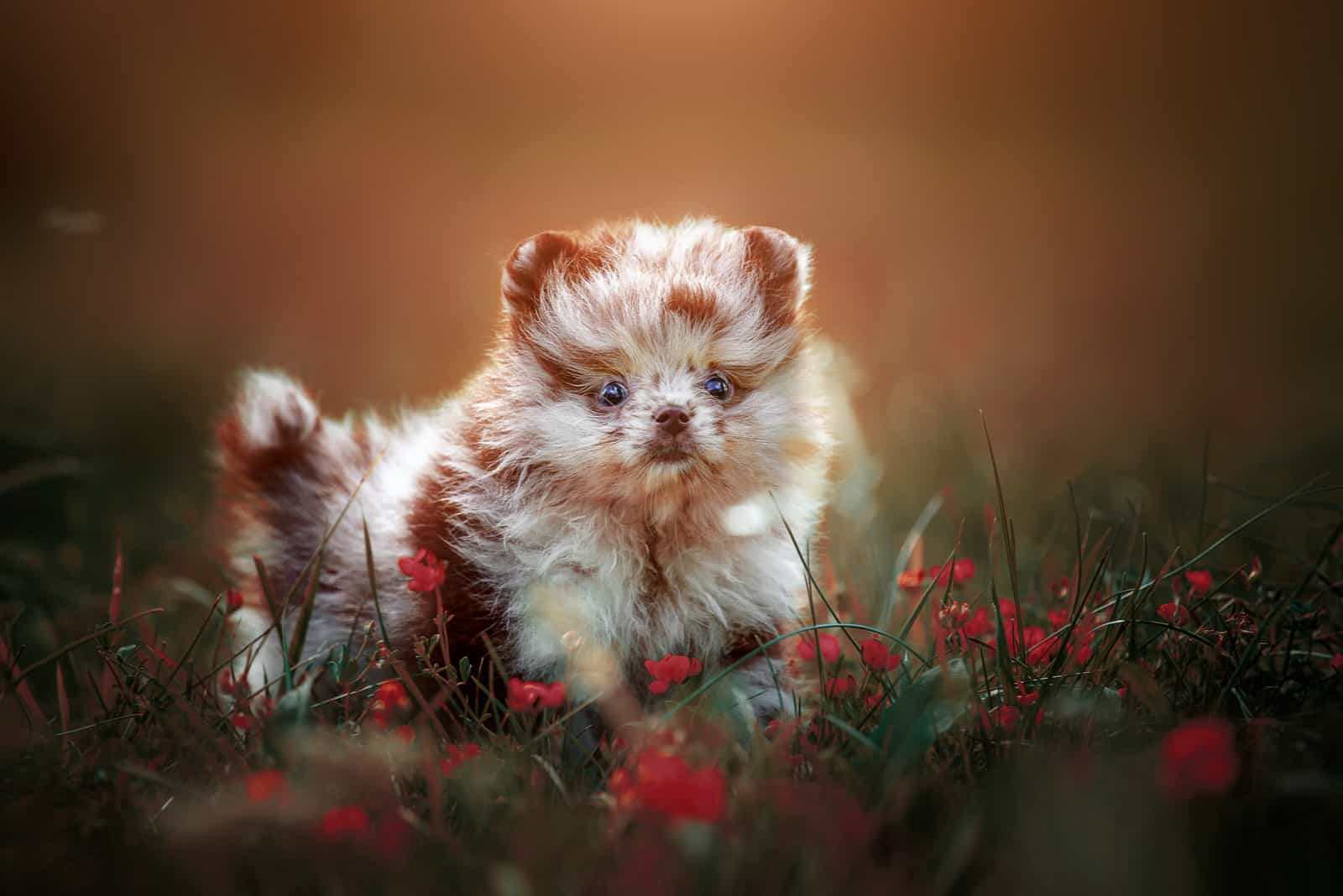They’re usually seen being carried around in a purse, but you can spot some cuddling on their owner’s lap. They’re the adorable Pomeranians, and they have a little secret to tell. They will become even cuter when you meet the special sub-breed – the merle Pomeranian.
The merle Pomeranian is a dog you’ve probably seen before but had no idea what it was. Now we’re going to tell you all the deets about the Pomeranian breed and solve the mystery that is the merle Pomeranian.
The Story Behind The Species: Origins Of The Pomeranian
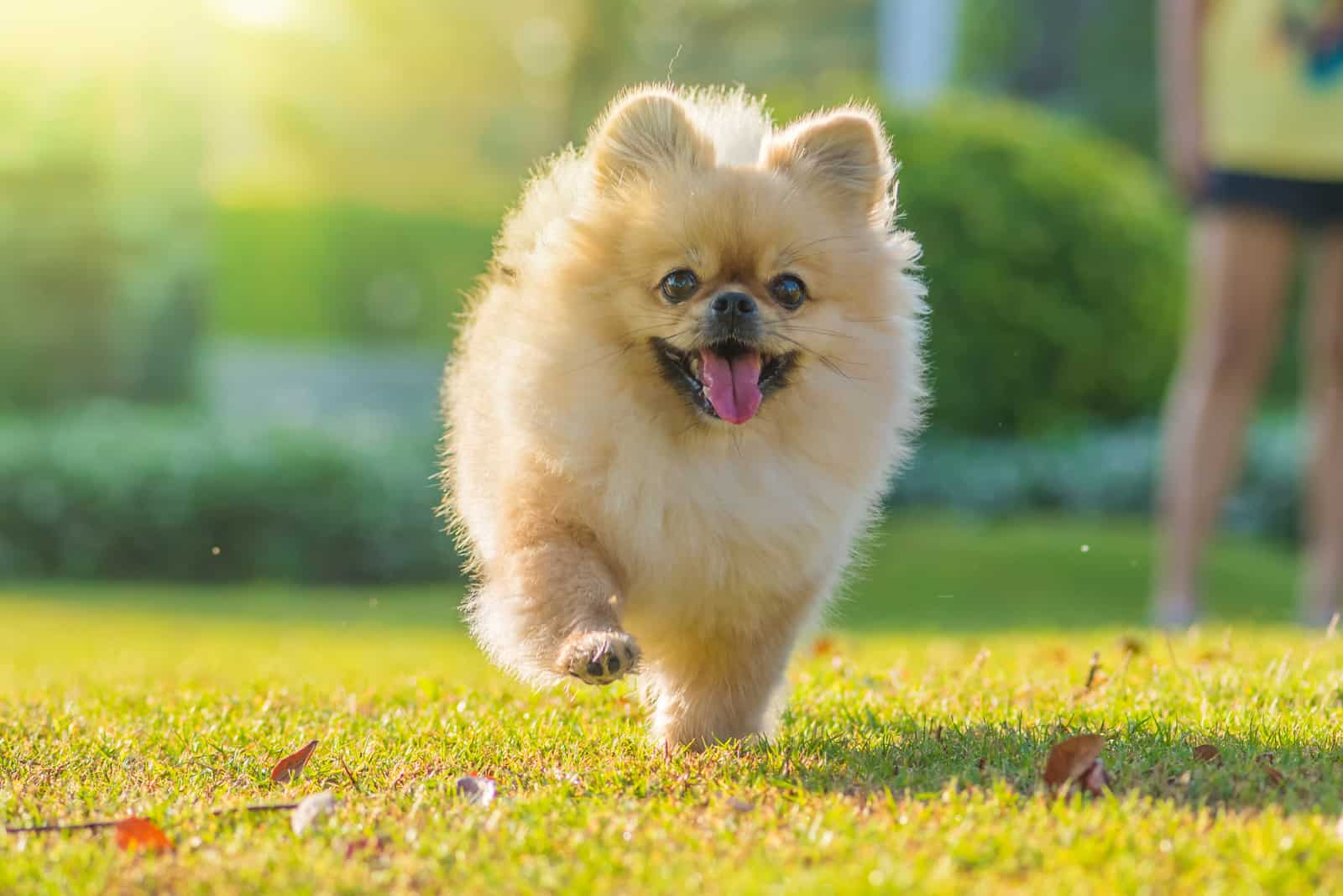
The province of Pomerania gave us a present in the form of one adorable-looking puppy – the Pomeranian! Pomeranian puppies were developed from an ancient breed named the Spitz. The closest relatives of these breeds include the Norwegian Elkhound, the Schipperke, the German Spitz, and other northern dogs with wedge-shaped heads, thick furry coats, and pricked up ears.
In the beginning, Pomeranians weighed around 30 pounds!
Ever since they were first bred, Poms have enjoyed quite the popularity.
Some notable people have had Poms as pets, including Martin Luther and his Pom Belferlein; artist Michelangelo whose Pom watched over the painting of the Sistine Chapel; physicist Isaac Newton and his Pom who loved to chew on his manuscripts, named Diamond; Mozart and Pimperl who even got an aria from the composer!
When the 17-year-old Princess of Mecklenburg-Strelitz, Sophia Charlotte, married the future English King George III in 1761, she brought along her dogs Phebe and Mercury. The pups weighed only 20 pounds, which was the standard back then.
The new breed was very popular with royalty but couldn’t find its way to the common folk.
Everything changed when Queen Victoria became the ruler of England. During her 64-year reign, Queen Victoria bred over 15 different dog breeds. The Queen was especially fond of Poms in her later years.
She saw them in Italy back in 1888 and fell in love with a sable and red Pomeranian named Marco. Nowadays, many breeders believe Marco was the inspiration for today’s small Poms. After all, he weighed only 12 pounds!
Marco even competed under the Queen’s name in many dog shows and won lots of honors. Three more Poms, other than Marco, were brought from the trip to Florence in 1888.
After Marco, the next famous Pom was Gina, who also became a champion in London. The Queen loved her Poms so much that she asked to see her favorite, Turin, while she was on her deathbed.
The Queen’s love for small Pomeranians inspired English breeders to produce smaller versions. From the 1900s to the 1930s, Pomeranians had the largest number of entries at dog shows across Britain. It was then when the Pomeranian breed standard was established.
The size went down to its current weight, and its characteristics were defined. In addition, many coat colors were added to the palette. The first Poms were usually white, black, chocolate, or blue. Now, the orange coast has become the Pom that wins dog competitions.
The popularity of this dog breed doesn’t stop here. It also spread across the Atlantic. The first Pom to enter the American Kennel Club (AKC) studbook was Dick in 1888. In 1892, the first Pom participated in a dog show in New York.
After the AKC recognition in 1900, the Pomeranian’s popularity was on the rise.
In 1909, the American Pomeranian Club became a member of the AKC and a Parent Club for the breed. By the mid-century, they became the most popular dogs in America. Today, they’re 14th among 155 breeds and varieties recognized by the AKC.
How Big Or Small Are The Poms?
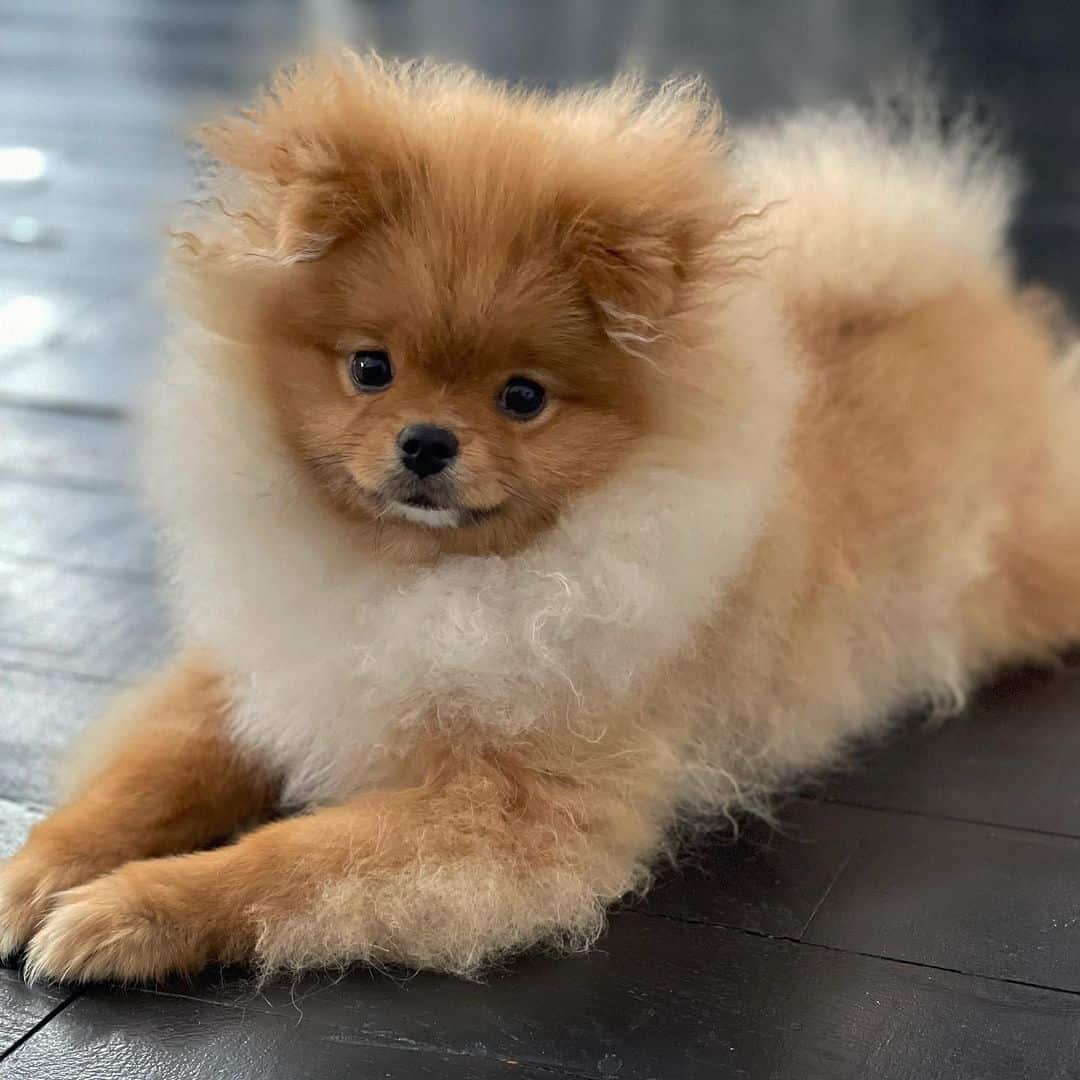
Photo from: @pousique_the_pom
We can’t say they’re big. Pomeranians are quite small. They can grow up to 12 inches in height and weigh up to 7 pounds. Of course, this is a standard for the breed, but some litters can have slightly bigger pups resembling those from the past. Then, there are the tiniest of them all, teacup Pomeranians!
Whether they’re small or a bit bigger, Pomeranians are great choices for families with kids.
What Are Pomeranians Like? Personality Traits You Need To Know
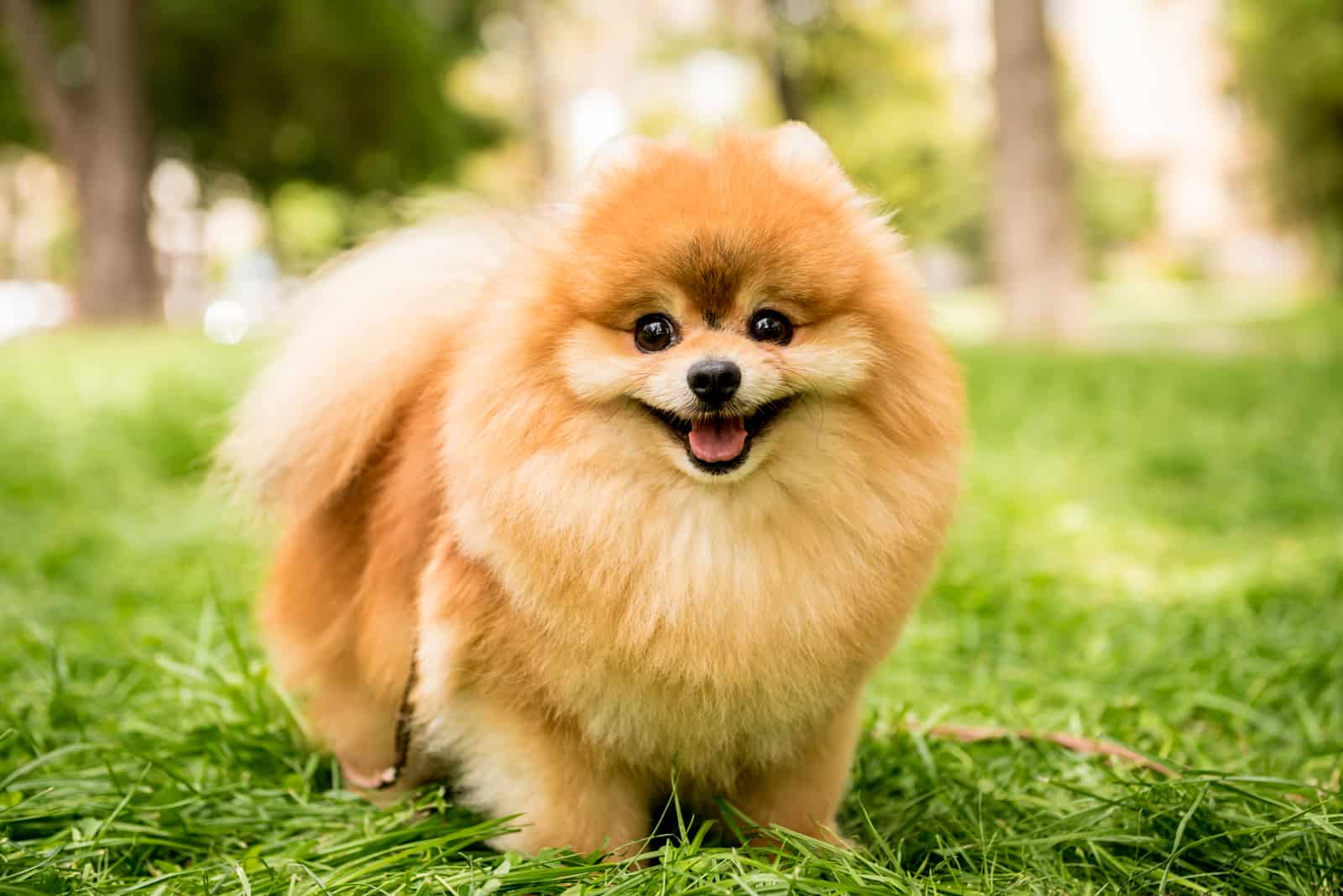
Rarely is any dog breed as smart as the Pomeranian. They’re vivacious and friendly to the max. They are dogs that love meeting new people and other animals. It appears the Pom isn’t quite aware of its size, so he often thinks he’s bigger. Don’t let him challenge bigger dogs. They can get hurt.
Even though they’re quite petite, Pomeranians make excellent watchdogs. They will bark at anything, literally. However, if you teach them to bark on command, you can have a watchdog as good as a German Shepherd.
The Pom’s temperament is affected by a number of factors. Some of them are heredity, training, and socialization. Puppies that have mild temperaments are often curious and love approaching people as well as playing with them.
It’s always best to choose a puppy that’s right there in the middle, not too calm that it will fall asleep in your lap all the time, and not too energetic that it will intimidate other littermates.
Aggression and shyness are not the traits you want your Pom puppy to have.
If you can, always meet with at least one of the dog’s parents, preferably the mother. This way, you’ll get an insight into the temperament and general health problems the pups could have.
Usually, Poms are friendly, quiet, and calm, a delight to live with.
Every pup needs to be socialized, and so does the Pom. Exposing them to early socialization training will only bring you lots of benefits. Once your puppy grows up, he or she will be a well-rounded dog.
The training must be constant, meaning every trip to the park, every encounter with new people, situations, or sounds can be a teaching moment.
Are Pomeranians A Healthy Breed?
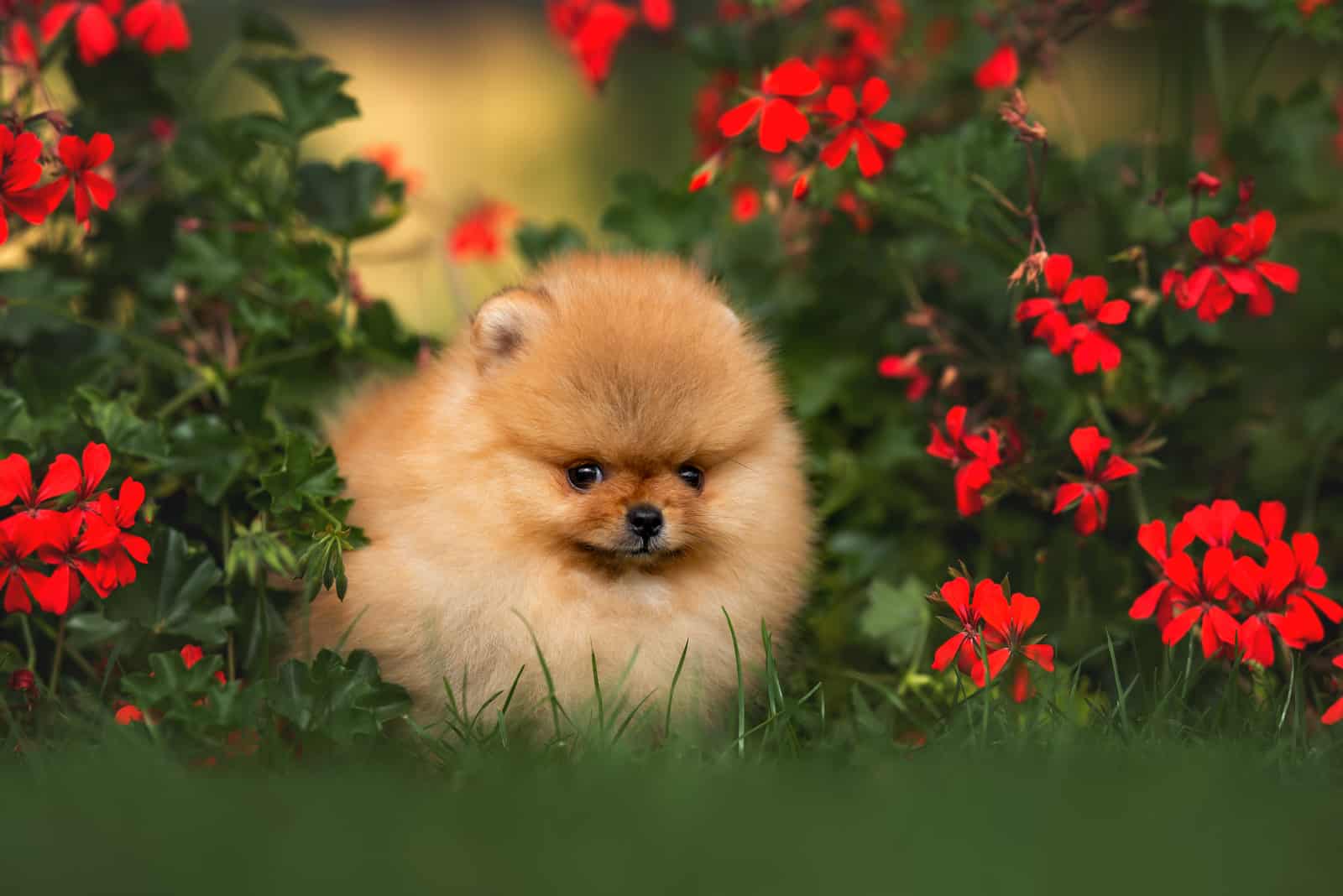
Yes, they’re a generally healthy breed, but they’re prone to health issues like many other breeds. Of course, this doesn’t mean all Poms will suffer from the following health problems, but it’s good to know what they’re prone to.
When buying a Pom puppy, make sure you find a good breeder, someone who will show you the exact health concerns and test results of their dogs. It’s important the Poms you’re looking at have health clearances from the Orthopedic Foundation for Animals (OFA) for hip dysplasia, elbow dysplasia, hypothyroidism, and von Willebrand’s disease.
Also, Auburn University should offer test results for thrombophilia, and the Canine Eye Registry Foundation (CERF) should have proof their sight is normal.
Here’s a list of health issues Pomeranians are prone to:
• Allergies. Some Poms suffer from a variety of allergies, including contact and food allergies. Symptoms include licking paws or rubbing the face excessively and should be checked by a vet.
• Epilepsy. Unfortunately, there are some Pomeranians that suffer from epilepsy and seizures. In such cases, medications and treatment are necessary for a normal life.
• Eye problems. Pomeranians are prone to many eye problems. Such problems include cataracts, keratoconjunctivitis sicca or dry eye, and tear duct problems. Eye problems can occur with young dogs and may lead to blindness if not treated. Redness, scarring, and excessively teary eyes are warning signs.
• Hip dysplasia. Hip dysplasia is an occasional problem with this breed. Factors like genetics, environment, and diet cause this hip joint deformity. Unlike larger dog breeds, Poms can lead a healthy life with this condition because they’re so small.
• Legg-Calve-Perthes disease. This is another disease that causes hip joint problems. Toy breeds are quite prone to this illness. This means that the blood supply to the head of the femur is decreased, and the head of the femur that connects to the pelvis begins to disintegrate.
The first signs are limping and atrophy of the leg muscle. They show up around 4 to 6 months of age. Vets usually perform a surgery that will remove the femur and use scar tissue to make a “false joint.”
• Patellar luxation. Another common problem for the Pomeranians. The patellar is actually the kneecap, and luxation means dislocation of an anatomical part (bone at a joint). It usually affects the hind legs and causes tremendous pain and lameness when the knee joint slides out of place.
• Collapsed trachea. Sometimes the trachea, which carries air to the lungs, collapses easily. Signs include a chronic, dry, and harsh cough resembling a “goose honk.” This condition can be caused by pulling too hard against the collar as you walk the dog, meaning you need to leash train your Pom.
• Dental problems. Pomeranian dogs are prone to teeth and gum problems as well as early tooth loss. Regular examinations at the vet, brushing their teeth often, and using dental snacks will improve the condition of your dog’s teeth.
Taking Care After The Pomeranian
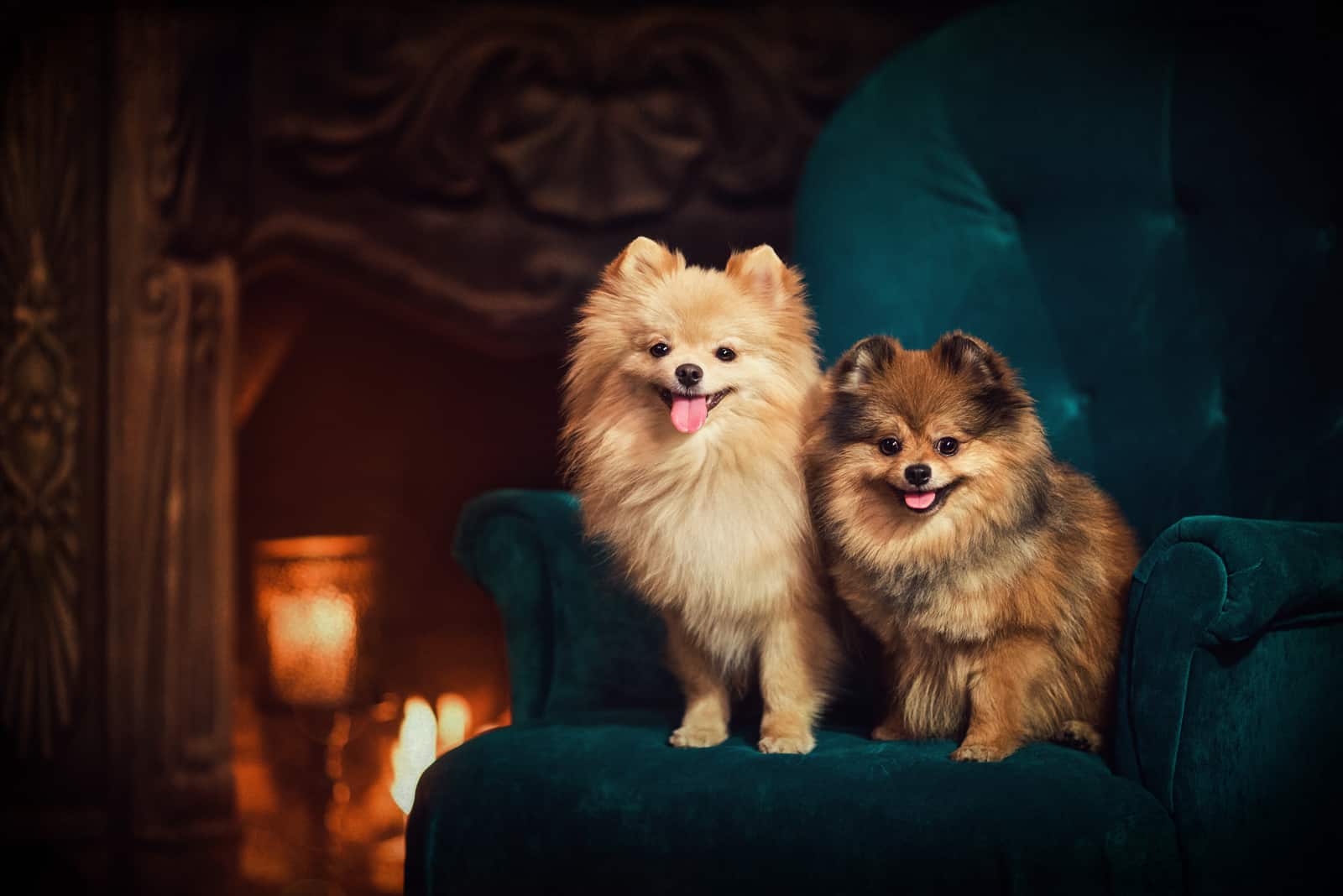
You’d never say it because they’re so tiny, but Poms are very active indoor pups. People who live in apartments or have a fenced yard will find them to be the perfect company.
They do enjoy long walks, but keep in mind these are small pups sensitive to heat.
Besides keeping them physically fit, you need to keep the Pom mentally fit too. They love to play but get bored easily. Always keep extra toys and rotate them, so there’s always something new. Puzzle toys are their favorite.
While your Pom will enjoy playing with toys all by itself, there is something you can do together. Trick training is what most Pom owners and Poms love. These dogs love being the center of attention; having them perform tricks is the best way they can be in focus.
Trick training should be brief and fun because of their short attention span and always followed by rewards.
What To Feed To Your Pomeranian
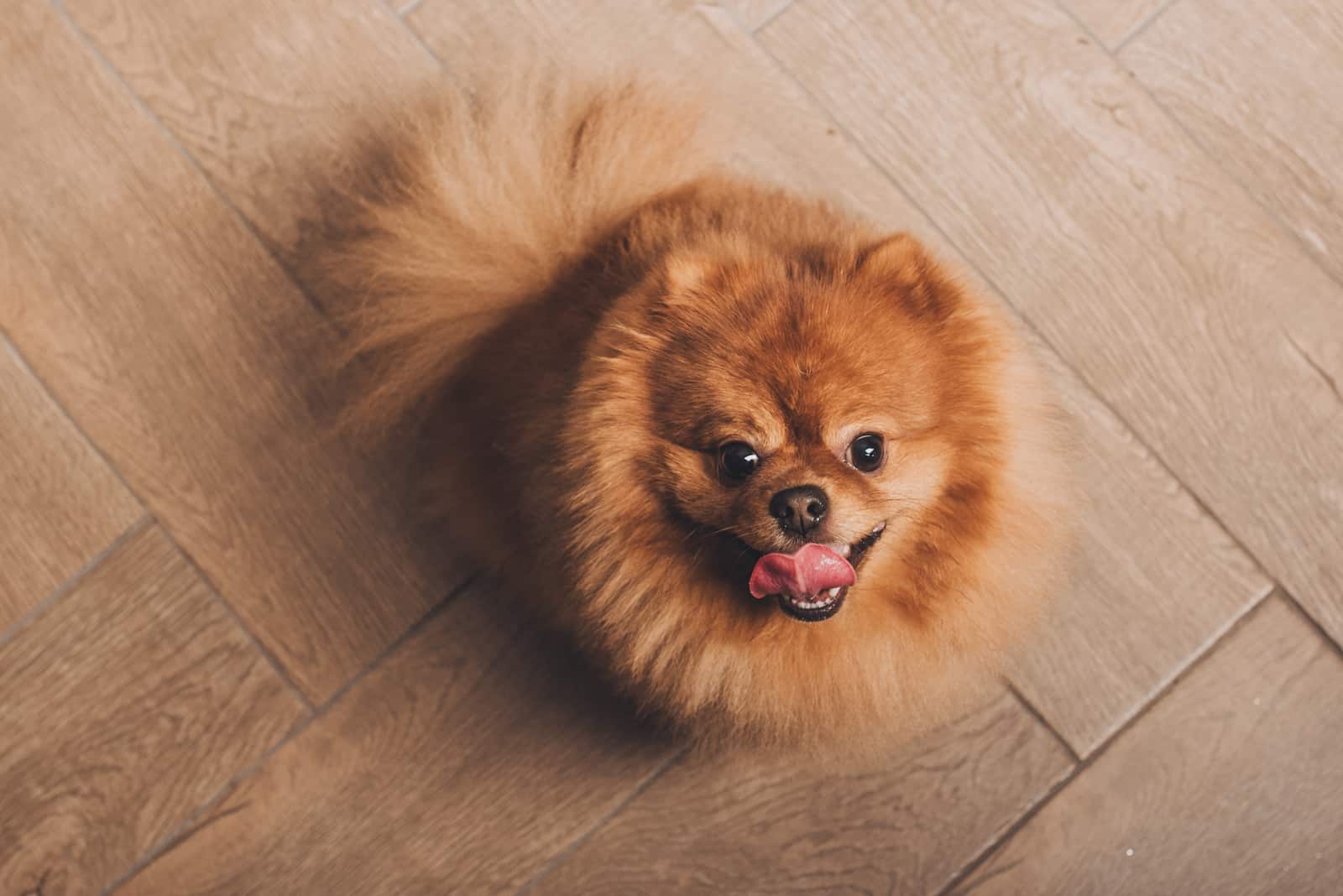
Poms should have two meals a day. The recommended daily amount is 1/4 to 1/2 cup of high-quality dog food.
An adult dog’s serving size depends on its size, age, build, activity level, and metabolism. No two dogs are the same. Each one is different and needs different food requirements.
The better the dog food is, the better it will nourish your dog.
Every dog owner must be aware of two lists of human food appropriate and inappropriate for dogs.
Food appropriate for dogs:
• Edamame
• Jicama
• Turnip
• Papaya
• Guava
• Scallops
• Basil
• Chesnuts
Food not appropriate for dogs:
• Paprika
• Bagels
• Pretzels
• Salsa
• Doritos
• Hummus
• Wasabi
• Spam
• Prunes
You can find more information on this dog’s nutrition in our Pomeranian feeding chart.
Pomeranian Coat Types And How To Groom Them
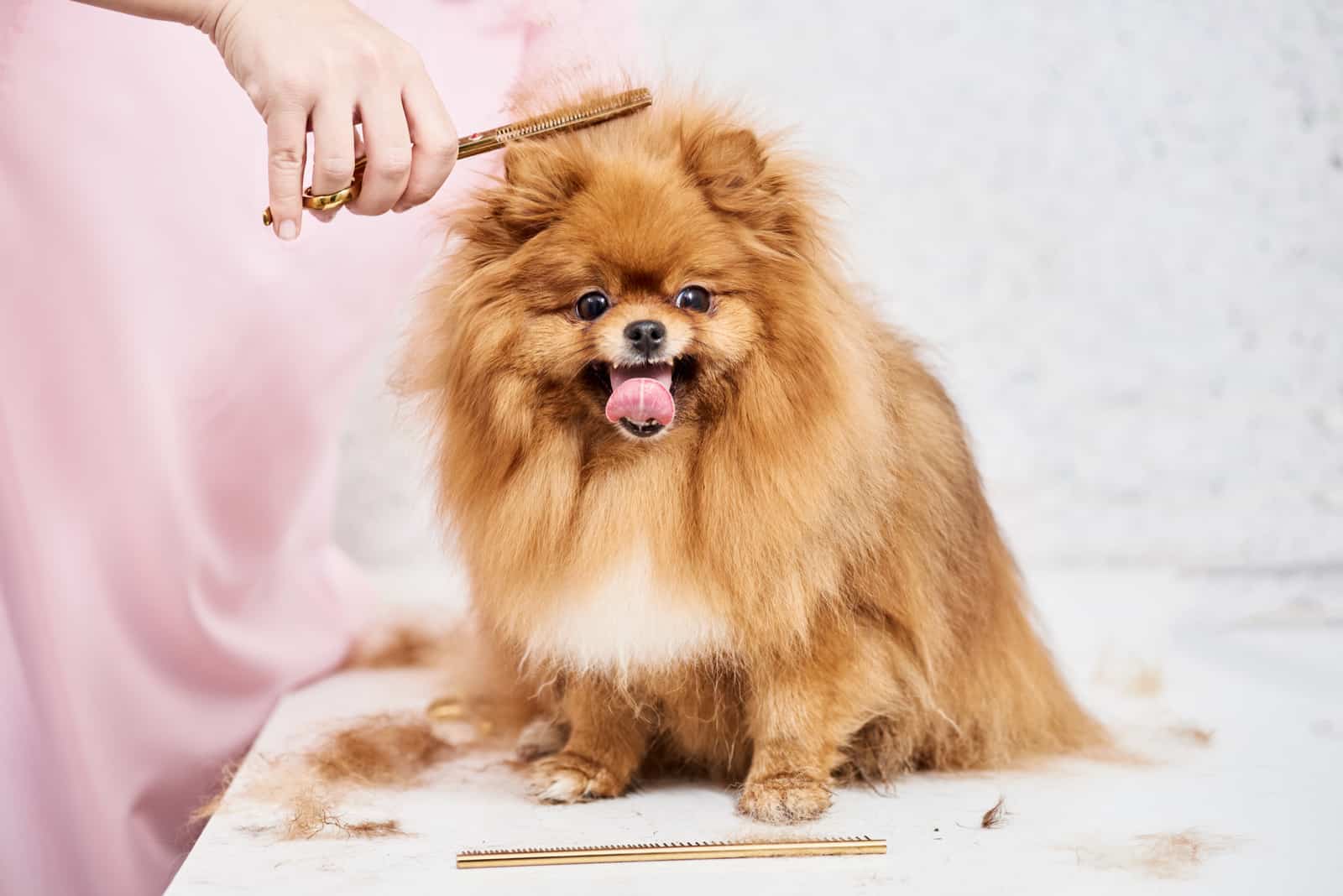
The Pom’s pride and joy are its thick, double coat and soft, thick, and fluffy undercoat. The outer coat is long, straight, shiny, and rough to the touch. The defining hair around the neck and the chest makes the Pom look so proud of its appearance.
On the other hand, the Pom’s tail is all plumed with hair fanning onto the dog’s back, making the dog look so fancy. It takes months to develop such an amazing tail.
What’s so great about this dog breed is that they come in any color you can think of. Here are the most beloved Pomeranian colors:
• black
• black and tan
• blue
• blue and tan
• chocolate
• chocolate and tan
• cream
• cream sable
• orange
• orange sable
• sable (black-tipped hairs on silver, gold, grey, fawn, or brown)
• brindle (black cross stripes on gold, red merle, or orange
• white.
Also, there are unique white Poms with white coats and patches of other colors on them, called “particolored.”
Poms are moderate shedders. Males usually shed their undercoats twice a year. Unspayed females shed their undercoats when in season, after delivering a litter, or when they’re feeling stressed.
The only way you can keep the hair off of your belongings is to brush and comb your pooch twice a week with a wire slicker brush and a metal comb. This will help distribute the skin’s natural oils and keep the coat nice and shiny. Also, matting and tangles will be gone.
To remove the shedding undercoat, brush all the way down to the skin.
Brushing starts at the dog’s head, working down the coat parted in two, so it falls back in place after you’re finished. An occasional trim around the feet, face, ears, and the rear end is always neat.
As long as you use a mild dog shampoo and conditioner, you can wash your Pom anytime you feel it should be done. If your dog smells, sprinkle some baby powder on his coat and brush it out between baths. It should neutralize the smell for a while.
Other grooming tasks include keeping the teeth and nails nice and clean. Since Poms are prone to dental problems, this area is something that must be cleaned carefully. Daily brushing would be ideal, but if you can’t manage it, try to do it at least once a week.
Dogs usually wear their nails down naturally. But, some still need some help. If you hear nails clicking on the floor, it’s time for a trim. Long nails cause pain to both you and your dog. Yes, we’re referring to all that jumping on your legs from the excitement!
But grooming isn’t just cleaning and trimming. Always pay attention and examine your dog for any sores, rashes, redness, tenderness, or inflammation. Ears should smell okay and shouldn’t have too much wax or dirt inside. Eyes should be crystal clear.
Every condition you can spot brings your dog one step closer to the proper treatment.
How Are Pomeranians With The Kids And Other Pets?
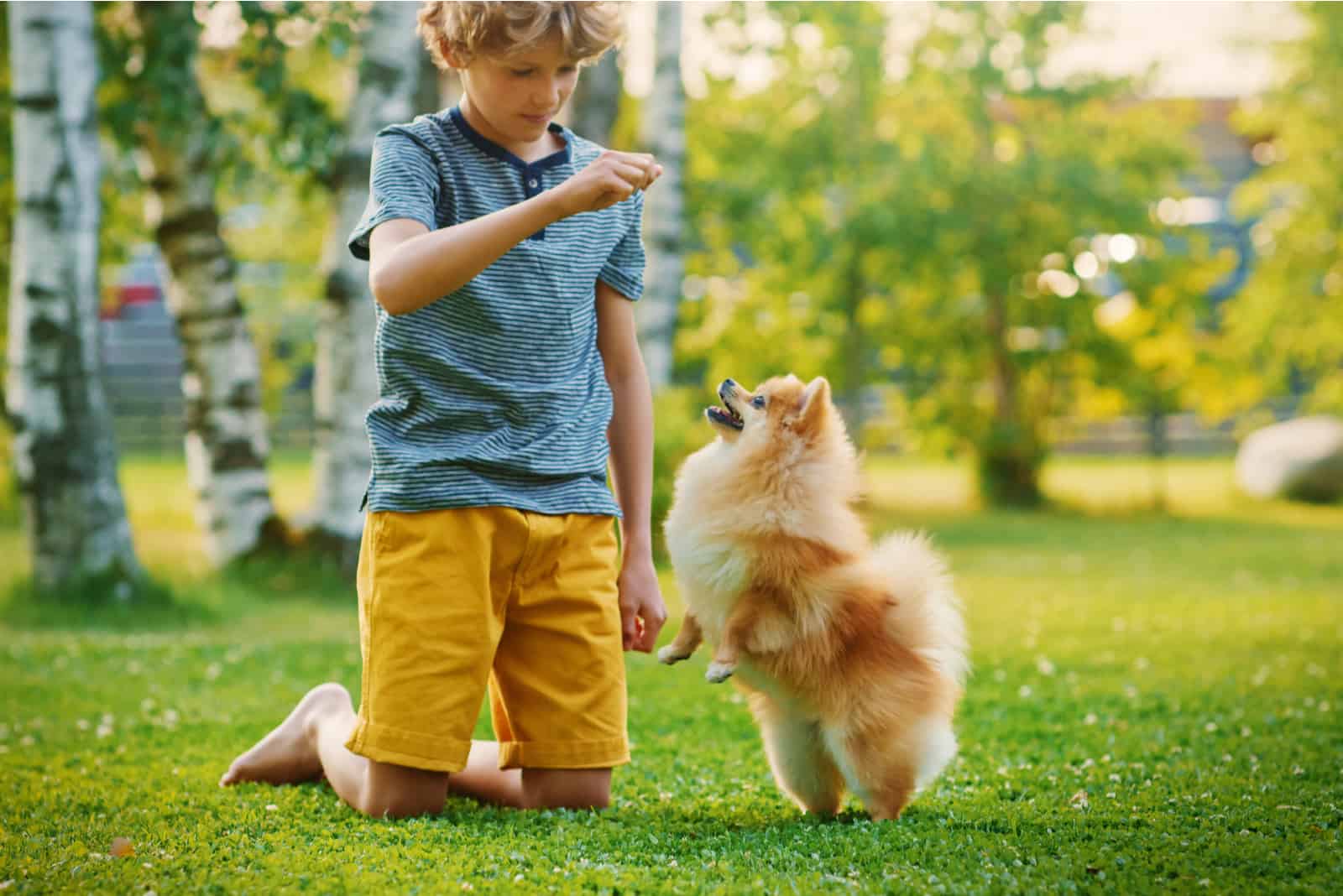
This dog breed is very friendly and playful but works best with older kids. Since this is a small dog, it shouldn’t be trusted with babies or toddlers so they don’t hurt him. We’ve seen cases of dog breeders who refuse to sell a Pom to families with tiny children.
If you accidentally drop a Pom or a kid steps on it, it can easily be injured. That’s a good enough reason why families with young children aren’t recommended for this breed.
Still, you should teach every kid how to approach a dog and how to touch it. Never leave the two of them unsupervised if you don’t trust either of them. A child should never approach a dog while he’s eating or try to take the food away from him.
As for other pets, the Pom gets along great with cats and other animals. It gets even better if those animals were raised together with the dog. Because they’re a tiny breed without being aware of how tiny, they should always be protected from bigger dogs.
Now that you have the general idea about what a Pomeranian is, it’s time to introduce you to an even more special Pom – the merle Pomeranian.
Many people have seen the merle, but they just don’t have any idea what it’s called. But, they do know it’s a wonderful blend of multiple colors that really makes the canine’s coat special. Having a puffy coat as Poms do, makes the merle color pattern even cooler.
Blue Merle Pomeranians Are Different From The Others Because Of Their Coat
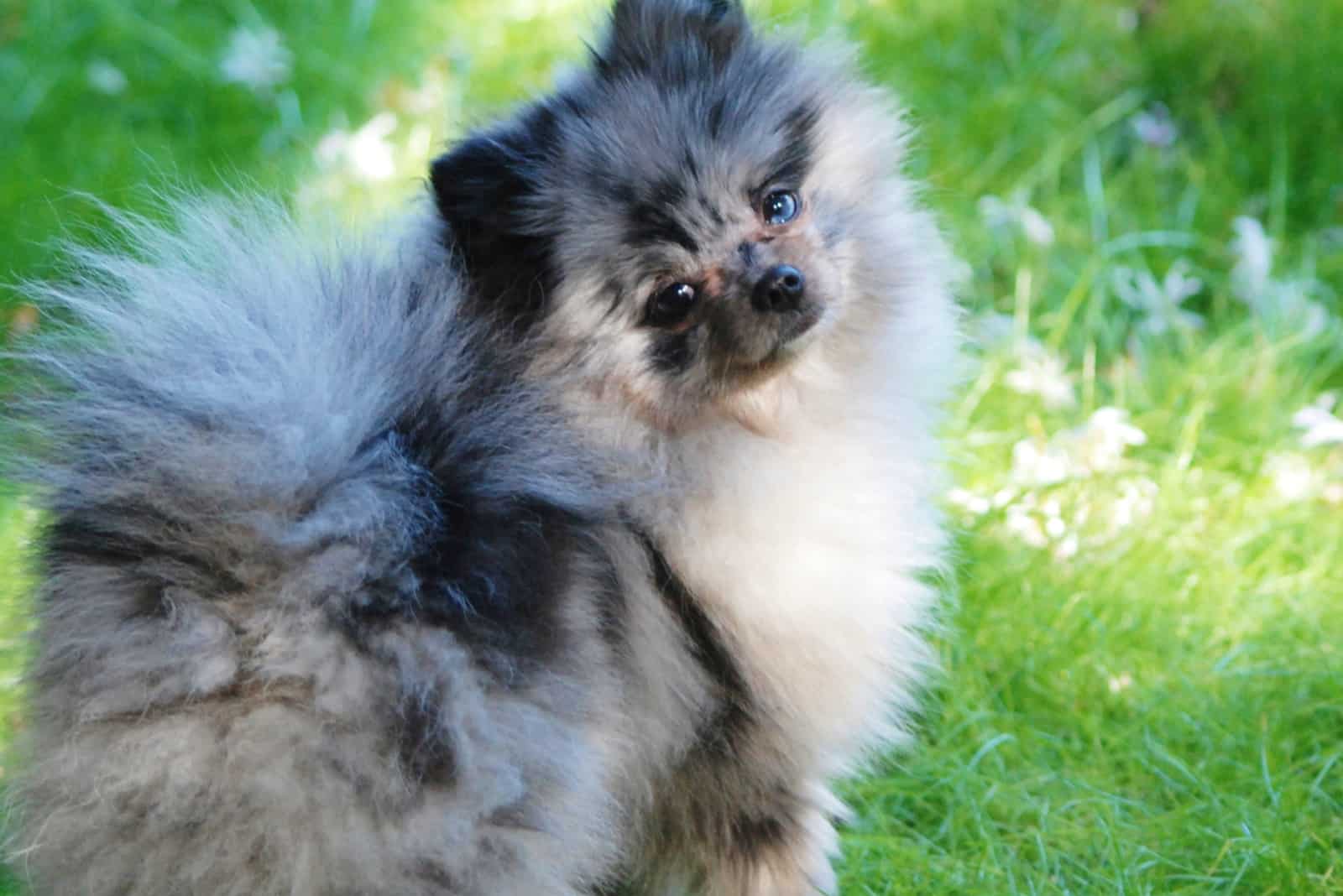
In other words, merle Pomeranians are only a subcategory. The only thing that makes them different from other Poms is their coloring: five to six colors splashed in an irregular pattern is what makes a merle.
They always have a solid base color pigment which can be either orange, black, red, or brown. The specks on the coat may be red, white, chocolate merle, blue merle Pomeranian, or in some rare cases, lavender merle. These markings can become more prominent on their necks, chest, legs, or underbelly.
Breeding with light-colored Pomeranians won’t give you any chance of getting a merle puppy. Such puppies might be either white or regular sable.
An even more special merle Pom is the parti-merle. In such cases, the merle effect occurs on only some sections of the dog’s body, like its head.
Merle is a unique pattern. You won’t find two exact merles ever. Even puppies from the same litter are different.
Do Merle Pomeranians Have Mutated Genes?
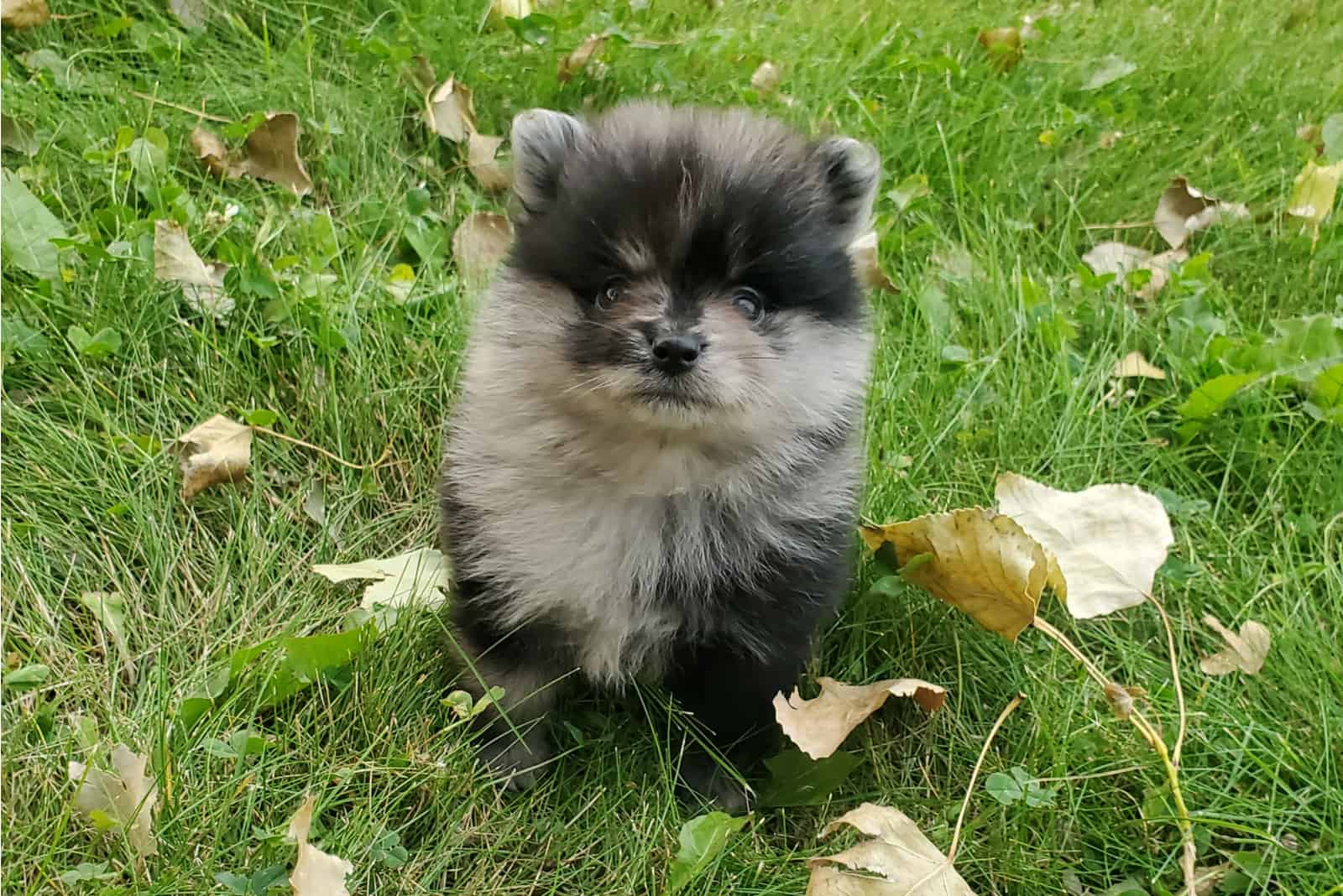
Merle is a mutation that may or may not come through. Merles usually have speckled noses and paw pads. It’s a mixture of black and pink. These traits cannot be predicted before breeding.
Much like the nose and paw pads, the eyes of a Merle Pom are also one of a kind. Some pups have heterochromia, meaning their eyes are mismatched. Even though they’re born with light blue eyes, the mutation might come through in time.
Other Poms can’t have this trait.
Cryptic Merles Or Phantom Merles
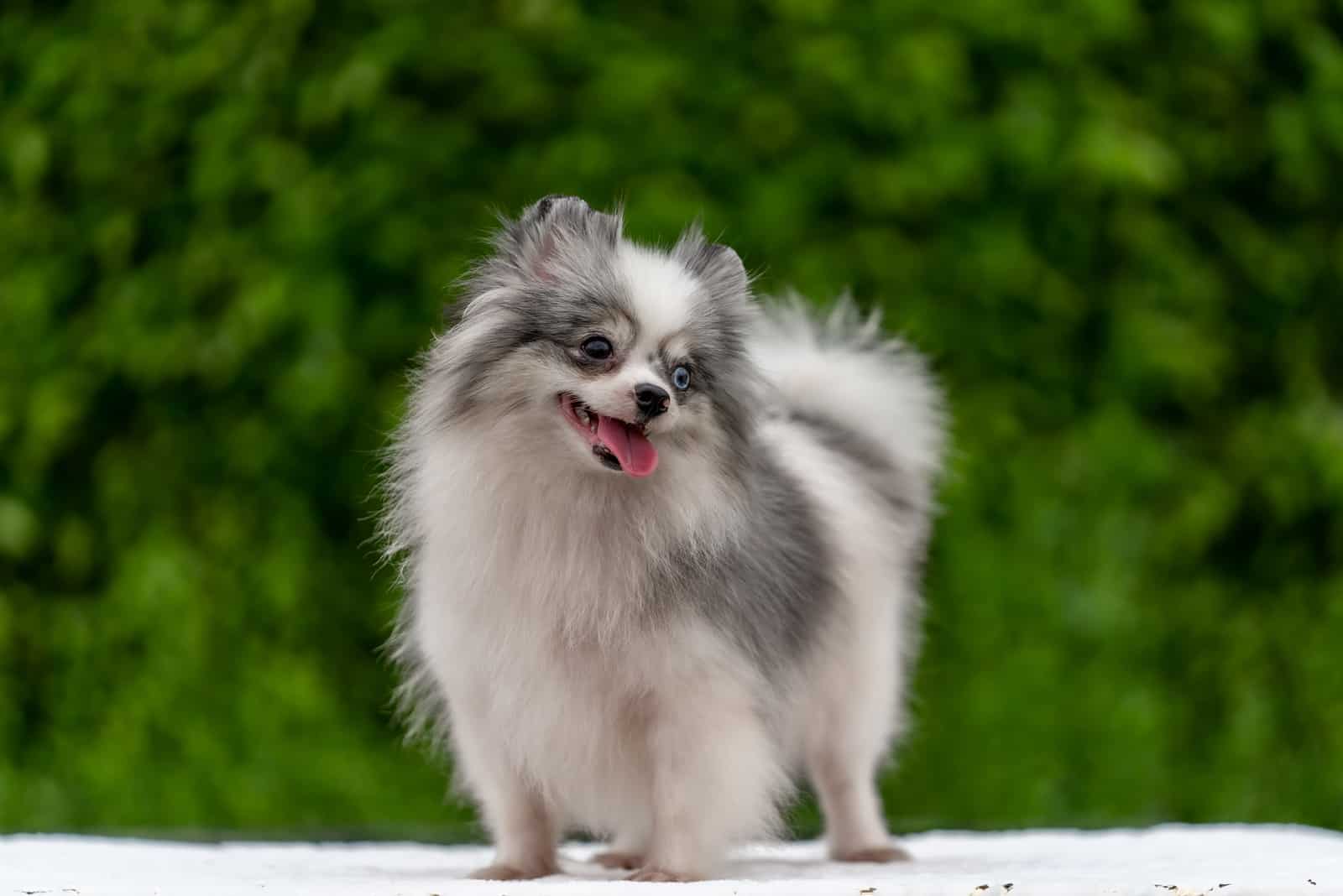
It takes only one parent to pass the merle gene on. That’s why this gene sometimes isn’t that obvious. Those are called cryptic merles or phantom merles. All Poms without mutated eye-colors or speckled coats should be checked before mating with a regular merle Pom.
Merle breedings should be done with care. Breeding two merle parents might lead to serious health issues with the offspring.
Do Blue Merle Poms Have Specific Health Issues?
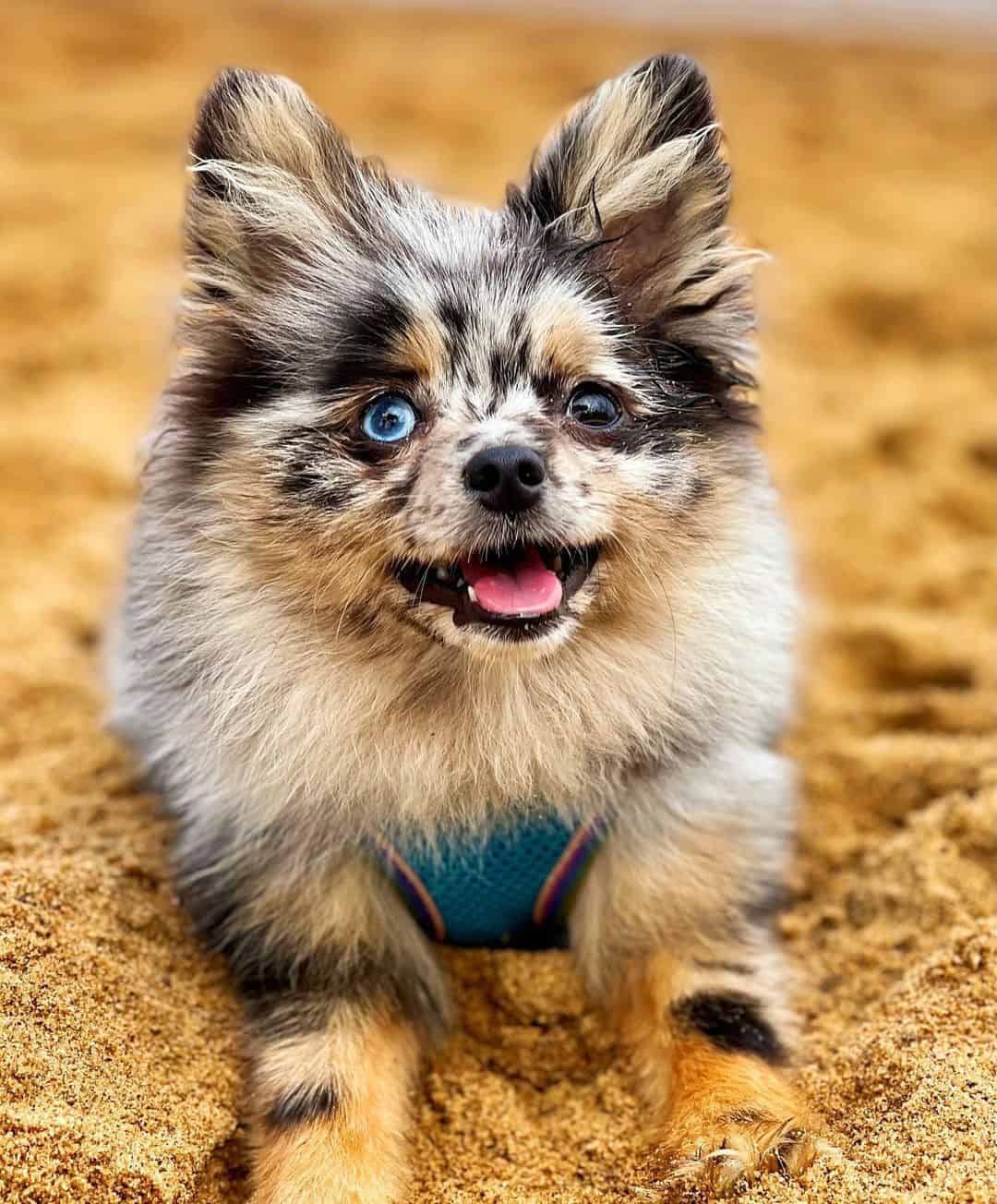
Photo from: @princessboop
When two merles breed, intentionally or unintentionally, the offspring are more likely to suffer from blindness and deafness. At least a quarter of the litter can suffer from those conditions. Like many breeds, Merle Pomeranians have a list of potential health issues they can be affected by.
Breeding a non-merle with a merle is a much safer practice that still produces wonderful dogs that are truly healthy.
It’s not a rule that every double merle puppy will have these health issues, but you know what they say: better safe than sorry.
Merle Pomeranians Are Getting As Popular As The Regular Ones
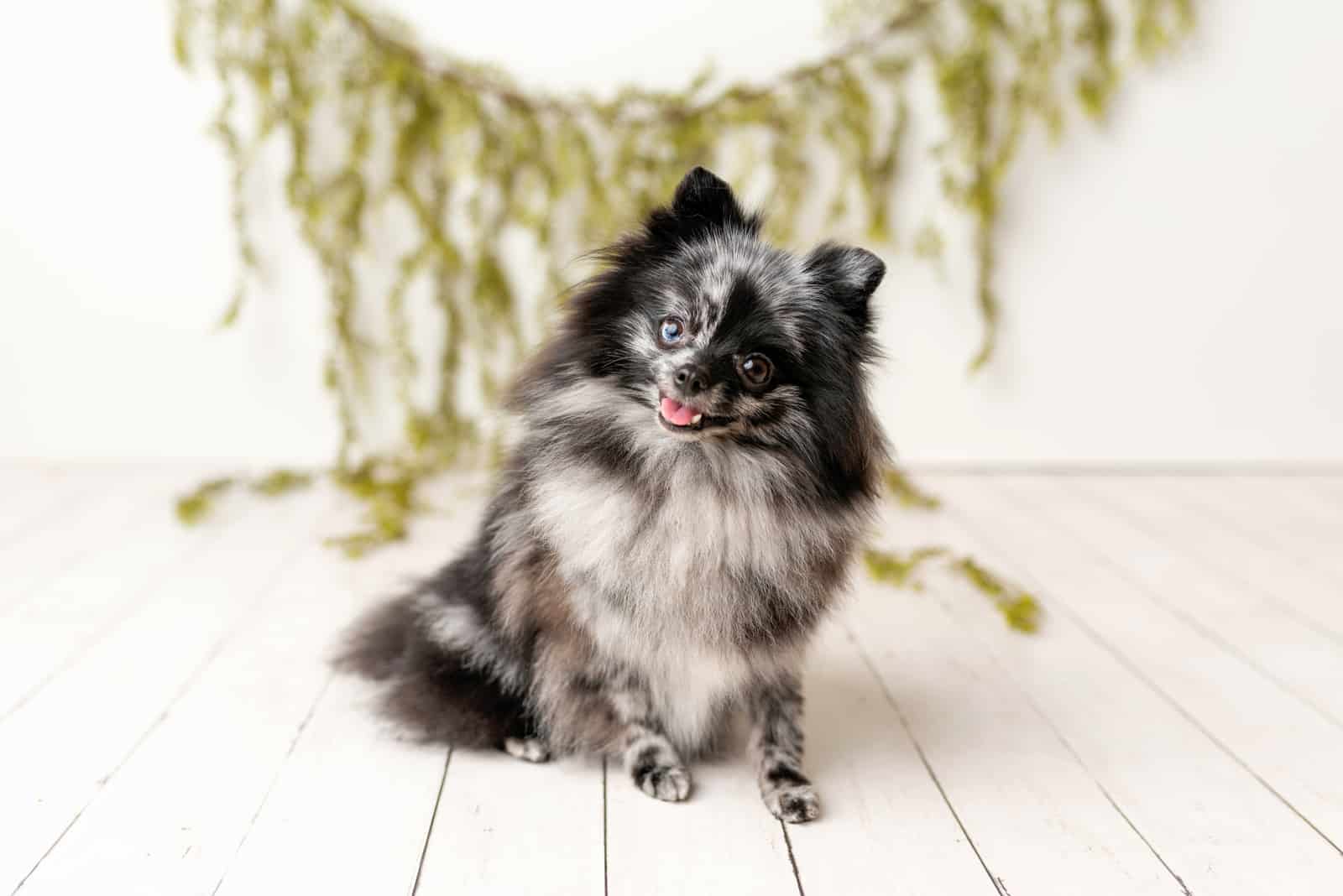
Merles aren’t rare, but they do require the time and skills needed for the breeding process.
Still, this doesn’t mean they aren’t on the pricey side. Like all purebred dog breeds, Pomeranians are expensive. Dogs can start at $1,200 and jump up to an astonishing amount of $5,000! But puppies can cost even more! Because of the genetic difficulties involved with breeding merle Poms, it would be almost impossible for a breeder to sell only merles. It would be a curious thing, but not necessarily nefarious if they did – maybe they don’t want to sell their other Poms.
This doesn’t make merles rare, though. A scroll through breeders’ websites shows that it’s common for them to have at least one available. If there are none, many breeders advertise checking in with them about the color Pom you’d like. For example, if they have a litter on the way known to contain merle genes, you may be in luck if you’re willing to wait. It will cost you, though.
If you want a Pom as your new best bud, you’ll either have to buy an older one which is always a lot cheaper, or save a ton for the cutest little puppy!
Finally
We can’t blame you for wanting to own one of the most popular dog breeds in the world. They are beautiful dogs that enjoy lapping up all the attention. Poms are pretty little pooches with an even more adorable temperament. You’ll definitely be head over heels when you see one in person.
Oh, but when you see a merle Pomeranian puppy, you’ll fall madly in love!
